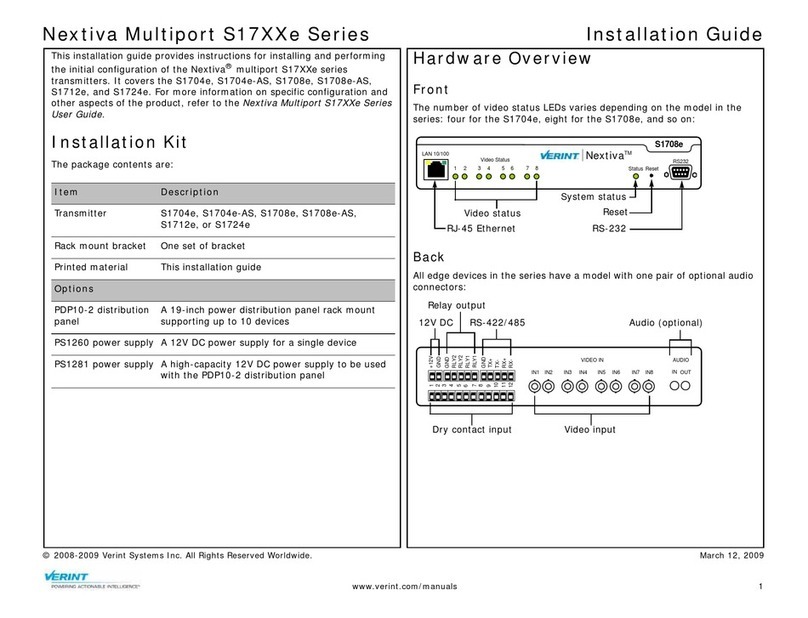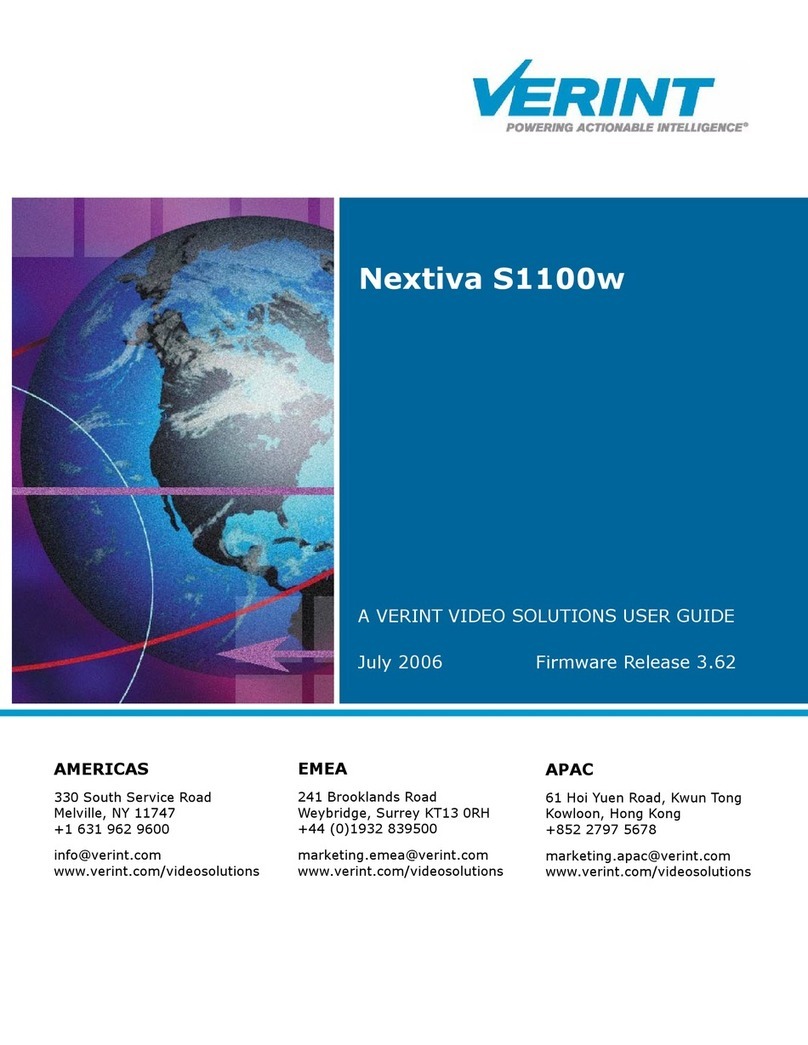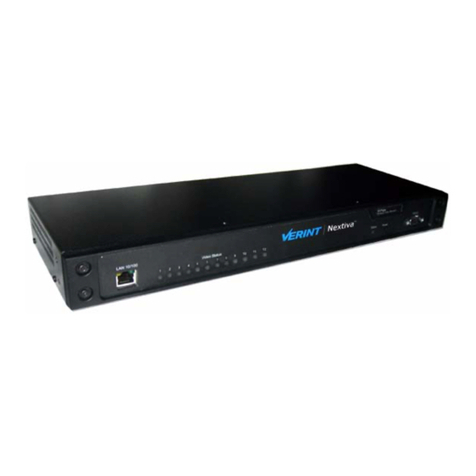
Verint Video Intelligence Solutions v
Contents
Preface .............................................................................................................. vii
Who Should Read this Guide ............................................................................viii
How to Use this Guide .....................................................................................viii
Conventions .............................................................................................viii
Related Documentation ..............................................................................viii
Related Products ............................................................................................. ix
About Us ........................................................................................................ ix
Warranty .........................................................................................................x
Chapter 1 Overview ..........................................................................................1
About the S1100w ............................................................................................2
Security .....................................................................................................2
Video ........................................................................................................2
Shipment ........................................................................................................3
Casing Description ............................................................................................4
Chapter 2 System and RF Planning ...................................................................5
Frequency Bands and Channels ..........................................................................6
2.4 GHz Band .............................................................................................6
4.9 GHz Band .............................................................................................6
5 GHz Band ................................................................................................7
Wireless Cells ..................................................................................................8
802.11 Support ................................................................................................8
System Planning ..............................................................................................9
Point-to-Multipoint Application .................................................................... 10
Compatibility Issues .................................................................................. 10
Video Bit Rate and Data Throughput ............................................................ 11
TPC ......................................................................................................... 12
DFS ........................................................................................................ 13
Colocated Cells .............................................................................................. 13
Distance Limitations .................................................................................. 13
4.9 GHz Band in North America ................................................................... 14
5 GHz Band in North America and 2.4 GHz ................................................... 15
5 GHz Band in Europe ................................................................................ 16
RF Planning ................................................................................................... 18
Location Evaluation ................................................................................... 18
Antenna Requirements .............................................................................. 19
Interference ............................................................................................. 20
RF Exposure Considerations ....................................................................... 20
Chapter 3 Configuring and Installing the Device .............................................21
Cable for Power, Video, and Serial Data ............................................................. 22
Configuring the Wireless System ...................................................................... 23
Computer Requirements ............................................................................ 23
Setting Parameters ................................................................................... 23
Point-to-Point Connection ........................................................................... 24
Installing the Wireless System ......................................................................... 26
Installing the Transmitter ........................................................................... 26































